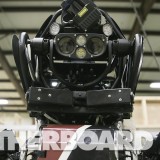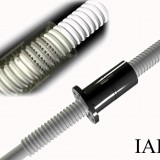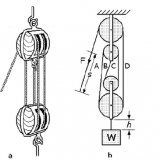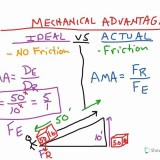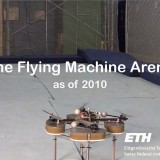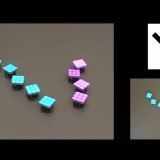LEGGED ROBOTS
LEGS or WHEELS
Most man-made vehicles today travel on wheels and for good reason: wheels are much easier to construct and control. In today’s economy, they also tend to be much cheaper than their legged counterparts. However legs have distinct advantages over wheels. The biggest advantage is in transversability and efficiency. Legged robots have a unique ability to:
• Isolate their body from terrain irregularities
• Avoid undesirable footholds
• Regulate their stability
• Achieve energy efficiency
These advantages are very desirable in modern robotics, and therefore a lot of research is being put into creating robots that can walk. The most challenging task in designing a legged robot is to create a system that can generate the proper gait.
Robots from MIT’s Leg Lab
DYNAMIC or STATIC
Locomotion techniques can be divided into two main categories: static and dynamic.
Robots that use static movement are always balanced; that is, their center of gravity is always within their ground contact base. While this technique has been successfully used to create many robots (included wheeled ones), it is more akin to wheeled movement than true dynamic walking and as such retains fewer of the advantages. While more adept at transversing uneven terrain than most wheeled robots, robots that use static walking are very inefficient as power is put into every movement. However, robots that use static walking are much easier to control than their dynamic counterparts and thus often more viable.
Dynamic walking is characterized in that the robot is not always in balance. Many robots that use dynamic walking are continually “falling” and thus much more energy efficient. Dynamic walking requires much more complex control systems in order to not fall. Robots utilizing dynamic walking cannot use the same motions at different speeds to attain different speeds of movement, but must use entirely different motions at different speeds. However, dynamic walking can achieve many more advantages over wheeled locomotion. Dynamic walking is found very abundantly in nature.
A subset of dynamic walking is called passive dynamic movement. Most dynamic walking systems use active control to move the legs to the correct orientations for walking (hence active dynamic walking). Passive dynamic walking is characterized by a system where “gravity and inertia alone generate the locomotion pattern.” Passive dynamic movement can be achieved with maximum efficiency, as the vehicle uses its own forward momentum to propagate its next movement. Very little energy is lost from the system. Most of the concepts of passive dynamic walking and research conducted in the field was done by aeronautical engineer Tad McGeer between 1988 and 1992.
3.1.One Legged Robots
3.2.Two Legged – Bipedal Robots (Humanoids)
3.3.Three Legged – Tripedal Robots
3.4.Four Legged – Quadrupedal Robots
3.5.Six Legged Robots (6 Legged Hexapod)
3.6 Robots With Many Legs
Download This PDF: InTech-Legged_Robotic Systems.pdf
Links
See All Types Of Robots - By Locomotion

